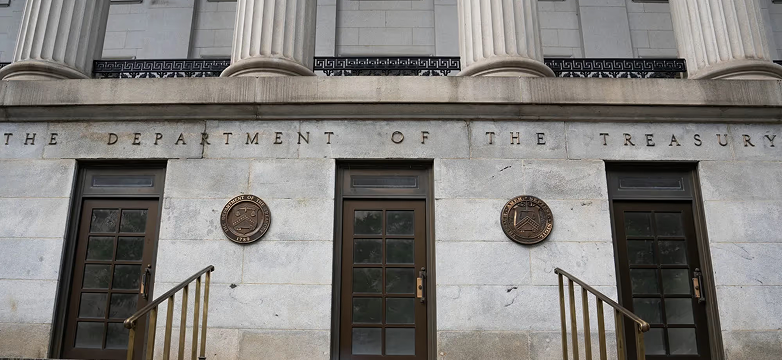The importance of intermediaries in the TTC market

To catalyze clean energy development, the Inflation Reduction Act established a new asset class, transferable tax credits (TTCs), that allow corporations to purchase tax credits from eligible projects at a discount, supporting sustainable investment and defraying tax costs at the same time.
Having a liquid market for TTCs will provide developers with certainty, efficient pricing, and the ability to line up financing prior to having TTC offtake contracts. To achieve this vision of a truly efficient and liquid market that serves all developers, a few ingredients will be critical.
First among them is unlocking thousands of new corporate buyers of TTCs. Buyers will need to be educated, and then supported through the nuances of individual transactions — legal, diligence, accounting, and more. Even as TTC transactions move towards being more standardized, there will remain a heavy advisory role to executing TTC transactions.
Because of their critical role in educating buyers and advising on TTC transactions, tax advisors, syndicators, banks, and other intermediaries and advisors will be critical to building this market. Financial institutions will also play a key role in structuring the novel TTC-linked financial products that will deliver more certainty and capital in the market.
However, because of the inherent advisory nature of the work, no individual advisor will be able to aggregate the entire market. We also hear consistently from intermediaries of all sizes and types that they struggle to keep credit supply and demand in balance, and to execute an exponentially growing number of transactions.
This leaves a gap in the market: the need for deep relationships, lots of education, and transactional support that will come from the intermediary layer — with the risks of total fragmentation of the market leading to less liquidity and certainty.
This is why we believe the emergence of an ecosystem powered by technology is essential. This ecosystem provides liquidity to everyone in the market, including by helping intermediaries scale their businesses.
What do we mean by an ecosystem
We believe that all configurations of transactions will be essential in creating an efficient market, depending on the size and complexity of transaction: bilateral transactions between developers and buyers; “marketplace” transactions that look closer to RFPs or auctions for credits; developers retaining sell-side advisors and investment banks to help them take their credits to market; and credits being placed through intermediaries and buy-side advisors.
Having a central ecosystem where those transactions can happen will maximize benefits for everyone. Developers and their advisors can list their projects once and have a source of truth to manage the process — whichever go-to-market path they are pursuing, or enabling them to run multiple processes in parallel.. Intermediaries can tap into a single stream of credits from developers across the ecosystem, and bring their own sell-side clients. Banks especially can also bring their own credits into the ecosystem to syndicate to the market or their own corporate clients.
A single ecosystem for credits across all permutations of transactions will create improved pricing visibility and more certainty of execution through greater liquidity. Intermediaries will be key to convening this ecosystem. Without intermediaries, fewer transactions are executed and the transferability provision of the IRA, which is central to financing the energy transition, won’t fulfill its potential impact.
The missing piece is helping ensure that intermediaries are supported to participate in the ecosystem to ensure liquidity materializes.
How does Crux enable this ecosystem
As intermediaries build their businesses, it will be critical to strengthen — not disintermediate — their client relationships. This is fundamental to these large and reasonably complex transactions with significant implications for companies’ financial statements.
Crux powers intermediaries’ businesses by providing them with a branded platform to both streamline their work with existing clients and tap into the wider market of supply and demand. They can invite developers and buyers into their white labeled instance, while also packaging and advising on transactions from the broader market for their buy-side clients.
Through our platform’s discovery engine, intermediaries can identify projects posted to Crux for their buy-side clients, post credits (e.g. from tax equity partnerships) and drive wide distribution to the larger Crux network, and invite buy-side clients to see the credits they are working on.
Our workflow management tools support everyone in transactions — developers, buyers, and intermediaries — from discovery and due diligence through insurance and closing.
The Crux ecosystem benefits everyone
By convening buyers, sellers, and intermediaries around the same powerful software, Crux is building the deepest and most liquid market. Buyers can see all available credits and work directly with trusted advisors, while developers can distribute their projects to the widest cross-section of the market.
For intermediaries, Crux is a critical tool to balance supply and demand by tapping into the liquidity of our larger market. Our platform offers tools to manage syndication, and our fee structure creates efficiencies for both intermediaries and developers.
This “ecosystem effect” doesn’t only benefit the intermediaries — buyers and sellers of credits also benefit from greater collaboration with their preferred partners.
Crux allows tax credit buyers to bring their own advisor to a transaction, and provides a single source of truth for the credits they have purchased.
For project developers, Crux offers a single location in which to manage all of their projects and tax credits, and provides access to the widest market of prospective buyers and intermediaries/advisors. They can bring their own buyers into the ecosystem or connect with new buyers or intermediary-advised buyers in the Crux network. Accessing this huge market is easy — sellers can get started and create a project on our platform in less than 10 minutes. Our fees are dynamic to help developers optimize on net price, regardless of intermediaries’ involvement in the transaction.
So, what next?
Intermediaries of all sizes are actively using Crux to manage supply and demand for tax credits and to effectuate transactions. Hundreds of millions of dollars in transactions are currently in process on the platform with a growing pool of buyers, sellers, and intermediary partners that collectively represent billions in annual volume.
We’ve poured resources into making sure Crux is the most advanced platform in the market to manage transferable tax credit transactions. We are deploying the platform to help intermediaries scale their businesses faster and rapidly iterating with our partners. Get in touch with us to learn more.
Additional insights & news

March 27, 2025
Crux’s data suggests that transferable tax credit buyers who transact earlier in the year can take advantage of wider tax credit credit availability as well as more potential for pricing discounts.
Read More.jpg)
March 13, 2025
Transferability has created new and more accessible ways for more developers and manufacturers to monetize tax credits. With the emergence of transferability and the growth of this liquid and transparent transferable tax credit market, new financing structures have emerged.
Read More
March 7, 2025
As tax credit buyers begin to plan their 2025 strategies, one question keeps coming up: how will policy changes affect the transferable tax credit market? Brandon Hill, tax principal and leader of CLA’s Energy Tax Services, joined Crux to discuss how CLA is advising tax credit buyers in 2025.
Read More





































































